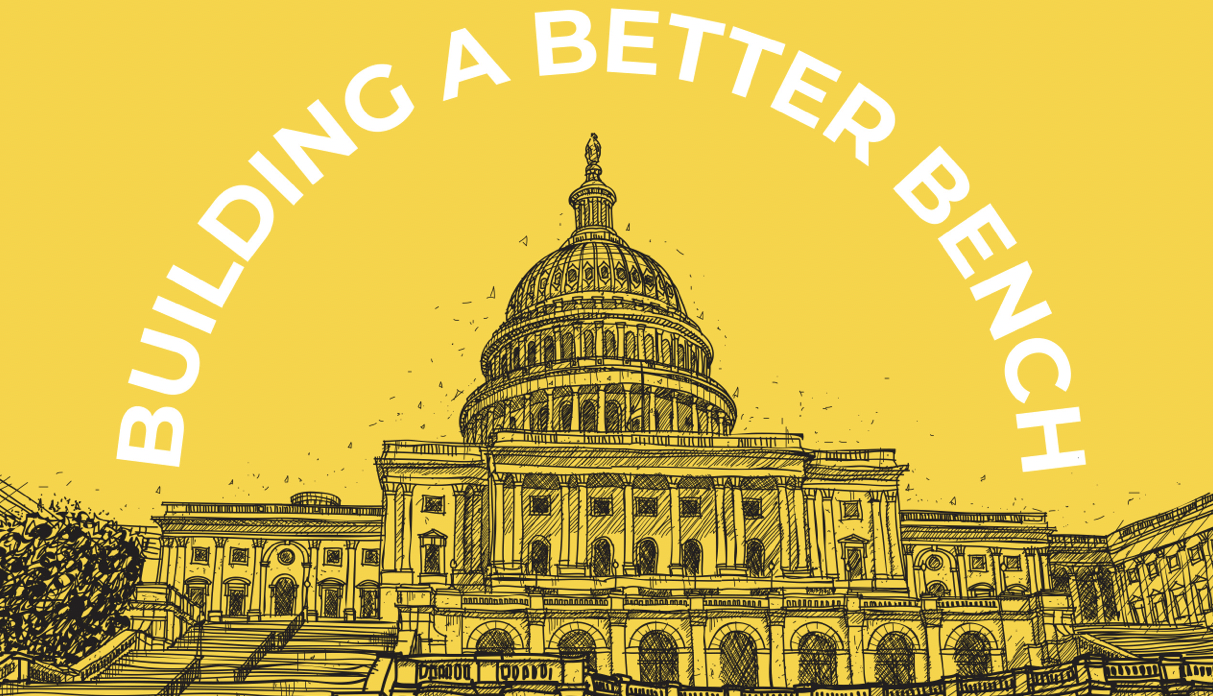REPORT: Building a Better Bench

Today, the People’s Parity Project released a report assessing the first two years’ of President Biden’s judicial nominations, and making key recommendations for the years to come. You can view the full report here.
In recent years, the question of what role federal judges play in our lives has become an increasingly urgent issue. With devastating Supreme Court rulings and lower court cases that have stripped people of their right to bodily autonomy, further diluted the votes of Black and brown people, and continued to protect corporate interests at the expense of real people, more attention is being paid to who is being appointed to the federal bench and what they’re doing once there.
At the start of his administration, President Joe Biden was clear in his commitment to making judges a core part of his legacy. Unlike his predecessors, Biden called attention to the stark underrepresentation of public interest lawyers on the bench. In December 2020, former White House Counsel Dana Remus sent a letter to senators stating that the Biden administration “is focused on nominating individuals whose legal experiences have been historically underrepresented on the federal bench including those who are public defenders, civil rights and legal aid attorneys, and those who represent Americans in every walk of life.” Two years later, the Biden administration—with the support of Senate Majority Leader Chuck Schumer, the Senate Judiciary Committee, and countless advocacy groups—has gotten 97 nominees across the finish line to become federal judges, making history for the demographic and professional diversity of these nominees in the process.
With midterm elections over and Democrats still holding onto the Senate majority, President Biden has the extraordinary opportunity to cement his legacy as a president who reshaped the composition of our federal judiciary. To do that, he must boldly move forward by elevating even more professionally diverse candidates and encouraging Congress to prioritize every single judicial vacancy that arises. There has been much good done on judges in the past two years, yet there remains significant potential to do even better in the next two years. In order to achieve this, there must be a willingness on the part of both the administration and the Senate to make some key changes. This report aims to assess the progress the administration has made thus far on these fronts, highlight areas of strength, and examine room for improvement.
While the statistics showing an increase in professionally diverse judicial nominees are stunning (and in some ways disappointing, as they speak to the egregious lack of demographic and professional diversity in the judicial nominations from previous administrations), it’s worth exploring two things President Biden, Leader Schumer and Senate Judiciary Committee Chairman Dick Durbin can do to be even more effective in their approach to judges: (1) expanding the scope of the professional diversity of future nominees and (2) eliminating the blue slip process.
Read the full report
Follow PPP
Don’t Bend the Knee: A Toolkit for Big Law Organizing
Pro-Bonus Pledge
PPP’s Pro-Bonus Pledge is organizing law firm associates (and others!) to donate our BigLaw bonuses…

